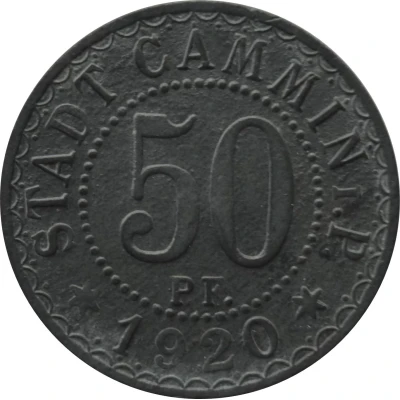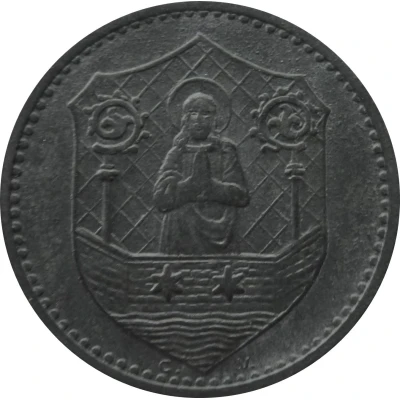


© Willem63 (CC BY-NC-SA)
50 Pfennigs - Cammin
1920 year| Zinc | 3.5 g | 25.0 mm |
| Issuer | City of Cammin (Prussian province of Pomerania) |
|---|---|
| Period | Weimar Republic (1918-1933) |
| Type | Standard circulation coin |
| Year | 1920 |
| Value | 50 Pfennigs (50 Pfennige) (0.50) |
| Currency | Mark (1914-1924) |
| Composition | Zinc |
| Weight | 3.5 g |
| Diameter | 25.0 mm |
| Thickness | 1.3 mm |
| Shape | Round |
| Technique | Milled |
| Orientation | Medal alignment ↑↑ |
| Demonetized | Yes |
| Updated | 2024-10-04 |
| Numista | N#329578 |
|---|---|
| Rarity index | 95% |
Reverse
Pearl rim, coat of arms with John the Baptist
Lettering: C.V.
Edge
Plain
Interesting fact
The 50 Pfennigs coin from Cammin, Prussia (now Kamień Pomorski, Poland) is interesting because it was issued during a time of hyperinflation in Germany, specifically in 1920, when the value of the German mark had decreased significantly due to the economic burdens of World War I. As a result, many cities and towns, including Cammin, issued their own emergency currency, like this 50 Pfennigs coin, to address the shortage of official currency. This coin, made of zinc and weighing 3.5 grams, was used as a substitute for the official German mark and was accepted as legal tender in the city of Cammin.